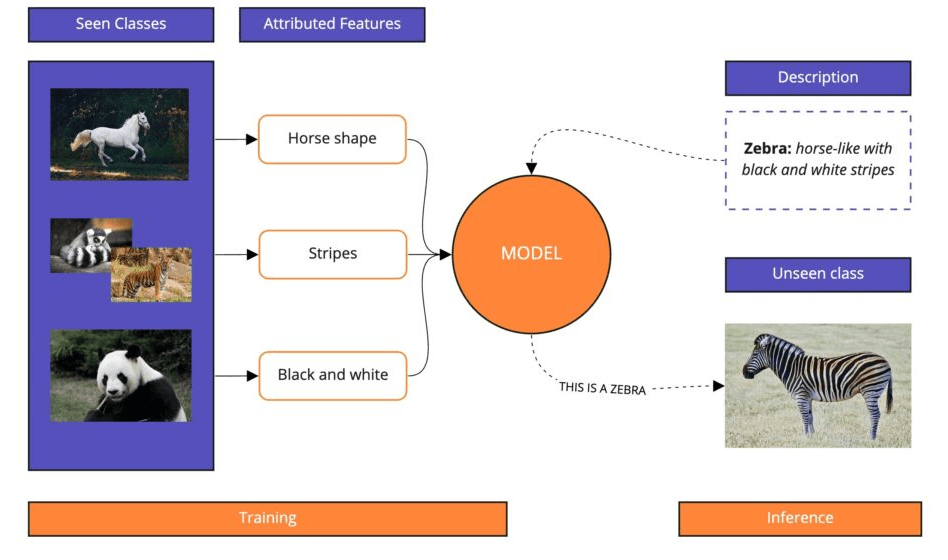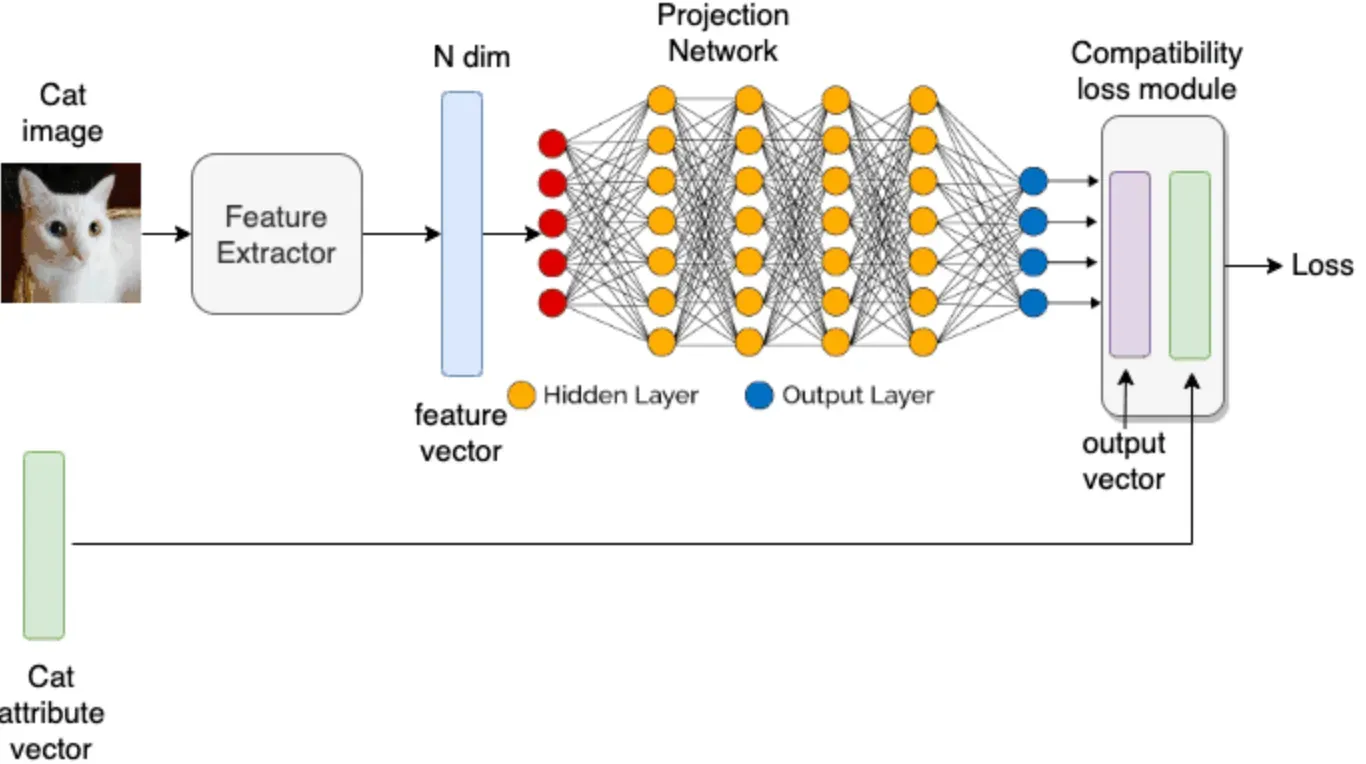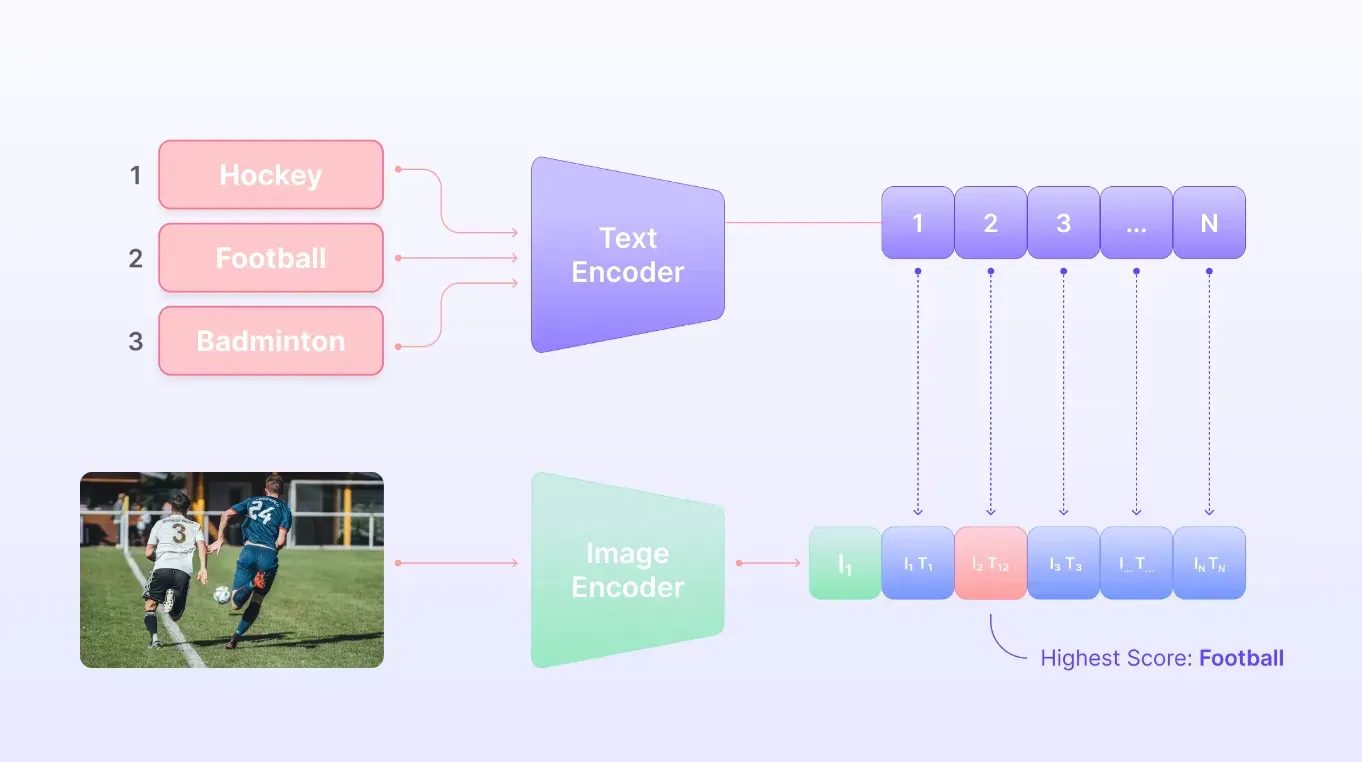What is Zero Shot Learning?
Zero Shot Learning aims to understand unseen classes, those not available during the training phase.
It uses side information, such as attributes or semantic information from similar classes, to recognize novel categories.
Distinction from Traditional Learning
Unlike traditional learning algorithms, ZSL doesn't require labeled examples of each class to make predictions. Instead, it leverages transfer learning and semantic understanding for this purpose.
ZSL shines in scenarios where labeled data is scarce or non-existent. It's extensively used for tasks like image recognition, natural language understanding, and recommendation systems.
An example of ZSL is teaching a machine to recognize an animal, say a cheetah, without showing any cheetah images but providing information such as 'it's a fast-moving, spotted, and four-legged creature'.
Why is Zero Shot Learning Important?
Labeled data is expensive to obtain and time-consuming to prepare. ZSL bypasses this by enabling understanding of new concepts with minimum labeled data.

- SMaking Models More Intelligent: Zero-shot learning allows models to make more general, contextual conclusions, effectively improvising 'creative' intelligence in machine learning models.
- Real-world Applications: ZSL can prove useful in building adaptable AI applications, like chatbots, image recognition systems, and recommendation algorithms, capable of dealing with novel situations.
- Future Possibilities: Zero-Shot Learning is shaping the future of AI, leading towards more generalized cognitive systems, which will significantly impact multiple sectors.
Who uses Zero-Shot Learning?
Researchers use ZSL to create more generalized machine learning models, pushing the boundaries of conventional supervised learning.
- Tech Companies: Tech giants like Google, Microsoft, and startups utilize ZSL in their AI models to handle novel situations autonomously.
- Industries: Several industries, including healthcare, finance, and retail, harness ZSL to forecast unseen scenarios or trends, enhancing their decision-making capabilities.
- Everyday Users: The products we use daily, like search engines, virtual assistants, and recommendation systems, rely on ZSL to provide a smarter user experience.
Where is Zero Shot Learning used?

ZSL is utilized effectively in NLP for tasks like text classification, semantic analysis, and event prediction, where labeled data is often limited.
Computer Vision
In computer vision scenarios, like facial recognition and object detection, zero shot learning facilitates the identification of novel or unseen objects.
Recommender Systems
ZSL can be used in recommender systems to suggest items that have never been rated or reviewed, hence enhancing user experience.
Predictive Analysis
Zero shot learning proves effective in predictive analysis, where it helps in predicting new trends or unseen instances based on existing data.
When is Zero-Shot Learning applied?
ZSL is a great choice when data collection and labeling is costly, or when there's a drastic class imbalance in the dataset.
- Novel Instances Arise: Whenever a novel instance arises, ZSL can bridge the gap between seen and unseen classes.
- Making Predictions: In times of forecasting or predicting unseen instances based on existing data, ZSL proves to be effective.
- Enhancing AI Intelligence: To give 'creative' thought ability to AI systems and making them more generalized in their operations, one can opt for Zero Shot Learning techniques.
How does Zero Shot Learning work?

Now, let's understand the mechanism behind ZSL.
Setting a Semantic Space
ZSL works by mapping input images (or other data) and class labels to a shared 'semantic space', like an attribute space or word vector space.
Leveraging Side Information
Based on correlated or 'side' information from seen classes, ZSL manages to recognize unseen classes.
Transfer Learning
It uses a transfer learning methodology, allowing the model to associate knowledge of seen classes with unseen ones.
Utilizing Semantic Similarity
ZSL compares the semantic similarity of the new input with existing classes, thus predicting the most relevant class for the new input.
Frequently Asked Questions (FAQs)
What is the key difference between traditional learning and Zero-Shot Learning?
Traditional learning requires labeled examples of all relevant classes to make predictions, while ZSL utilizes side information from seen classes for understanding unseen ones.
How does Zero Shot Learning handle novelty?
Being able to deal with novelty is a key aspect of ZSL. It fills the gap between seen and unseen classes by leveraging shared information or attributes.
Can Zero Shot Learning operate without any labeled data?
ZSL still requires labeled data, but not for every class. It needs enough to discern a pattern or contextual understanding, which can then be applied to unseen classes.
How does Zero Shot Learning contribute to AI?
ZSL brings us closer to creating more intelligent, generalized AI systems that can understand and adapt to new situations, thus enhancing the AI's 'creative' thought ability.
In what domains can Zero Shot Learning be applied?
ZSL can be applied in various domains, including natural language processing, computer vision, recommender systems, and predictive analysis, among others. It's especially useful where labeled data is scarce or non-existent.

